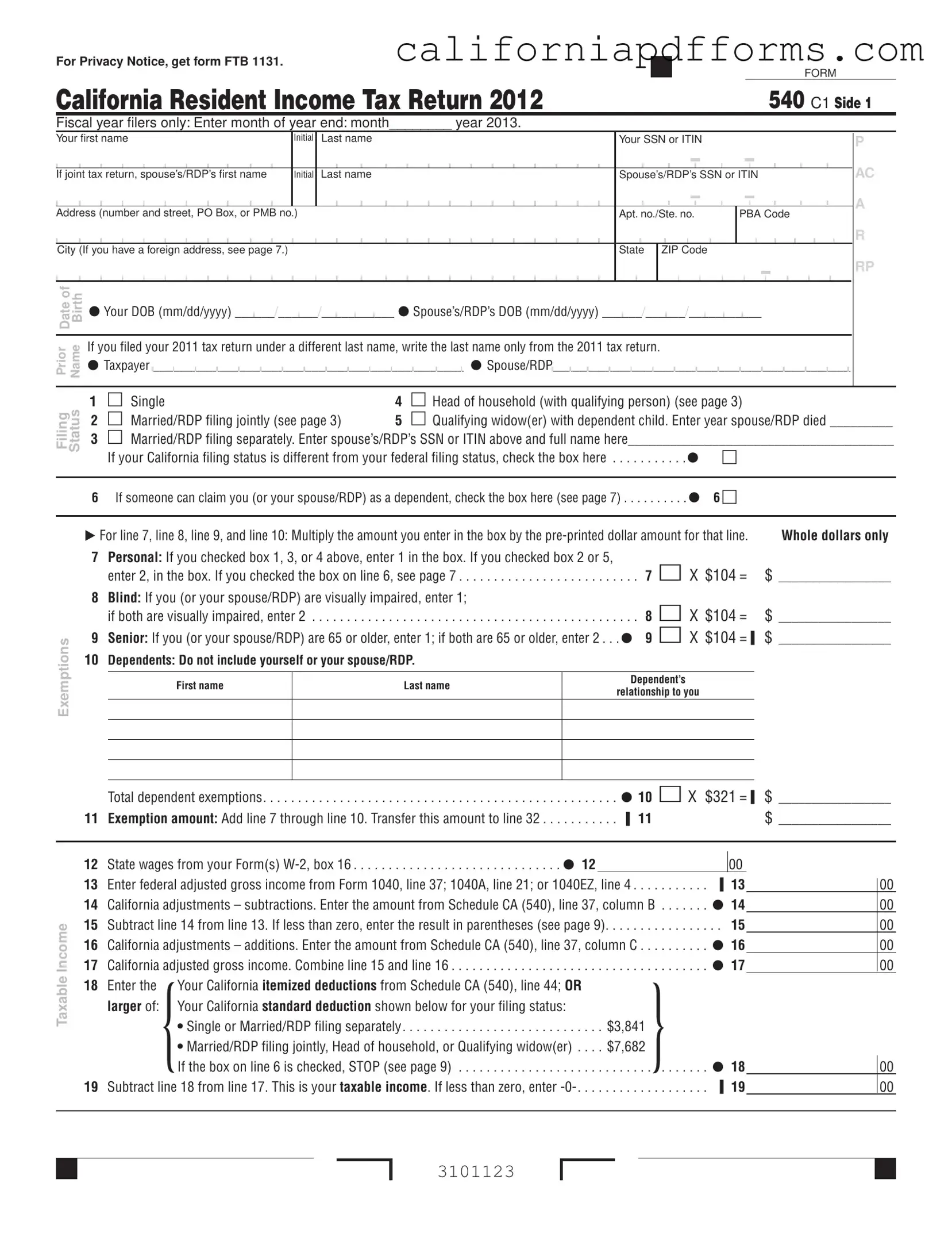The California 540 C1 form is a tax return used by residents of California who are filing their state income taxes for a fiscal year. This form is specifically designed for individuals and couples who may have different filing statuses, such as single, married filing jointly, or head of household. It allows taxpayers to report their income, claim deductions, and calculate their tax liability for the year. If you are a resident of California and need to file your state taxes, this form is essential.
Individuals who meet certain income thresholds and are considered residents of California must file the California 540 C1 form. This includes:
-
Residents who earn income from California sources.
-
Individuals who have a filing status of single, married filing jointly, married filing separately, head of household, or qualifying widow(er).
-
Taxpayers whose federal filing status differs from their California status.
If you are unsure whether you need to file, it is advisable to consult with a tax professional or review the guidelines provided by the California Franchise Tax Board.
To complete the California 540 C1 form, you will need to gather several pieces of information, including:
-
Your Social Security Number (SSN) or Individual Taxpayer Identification Number (ITIN).
-
Your filing status and personal information, such as your name, address, and date of birth.
-
Income details, including wages reported on Form W-2 and any other sources of income.
-
Information on any dependents you may be claiming.
-
Details regarding any deductions or credits you plan to claim.
Having this information readily available will streamline the filing process and help ensure accuracy.
Your filing status is determined by your marital status and family situation as of the last day of the tax year. The California 540 C1 form provides several options, including:
-
Single
-
Married/RDP filing jointly
-
Married/RDP filing separately
-
Head of household
-
Qualifying widow(er) with dependent child
Choose the status that best reflects your situation. If you are unsure, consider seeking guidance from a tax advisor.
The California 540 C1 form allows for various deductions that can reduce your taxable income. Common deductions include:
-
California standard deduction, which varies based on your filing status.
-
Itemized deductions, if you choose to itemize rather than take the standard deduction.
-
Exemptions for yourself, your spouse/RDP, and dependents.
-
Adjustments for specific expenses, such as contributions to retirement accounts.
It is crucial to review the instructions for the form to ensure you are taking advantage of all eligible deductions.
Once you have completed the California 540 C1 form, you can submit it in one of two ways:
-
Electronically, using the California Franchise Tax Board’s e-file system.
-
By mail, sending the completed form to the address specified in the instructions, along with any required payment.
Be mindful of the filing deadline, which typically falls on April 15 of the following year, to avoid any penalties or interest charges.
